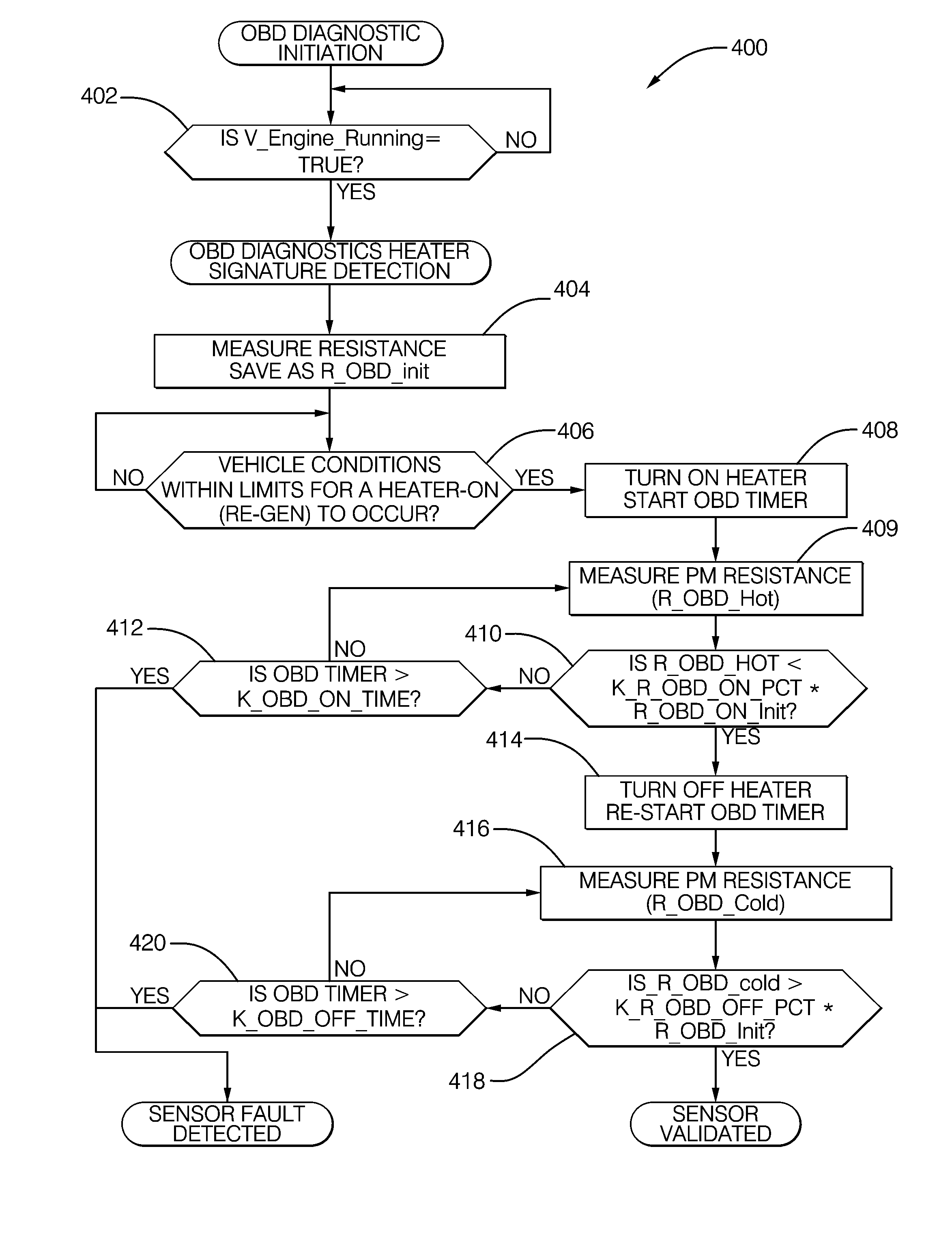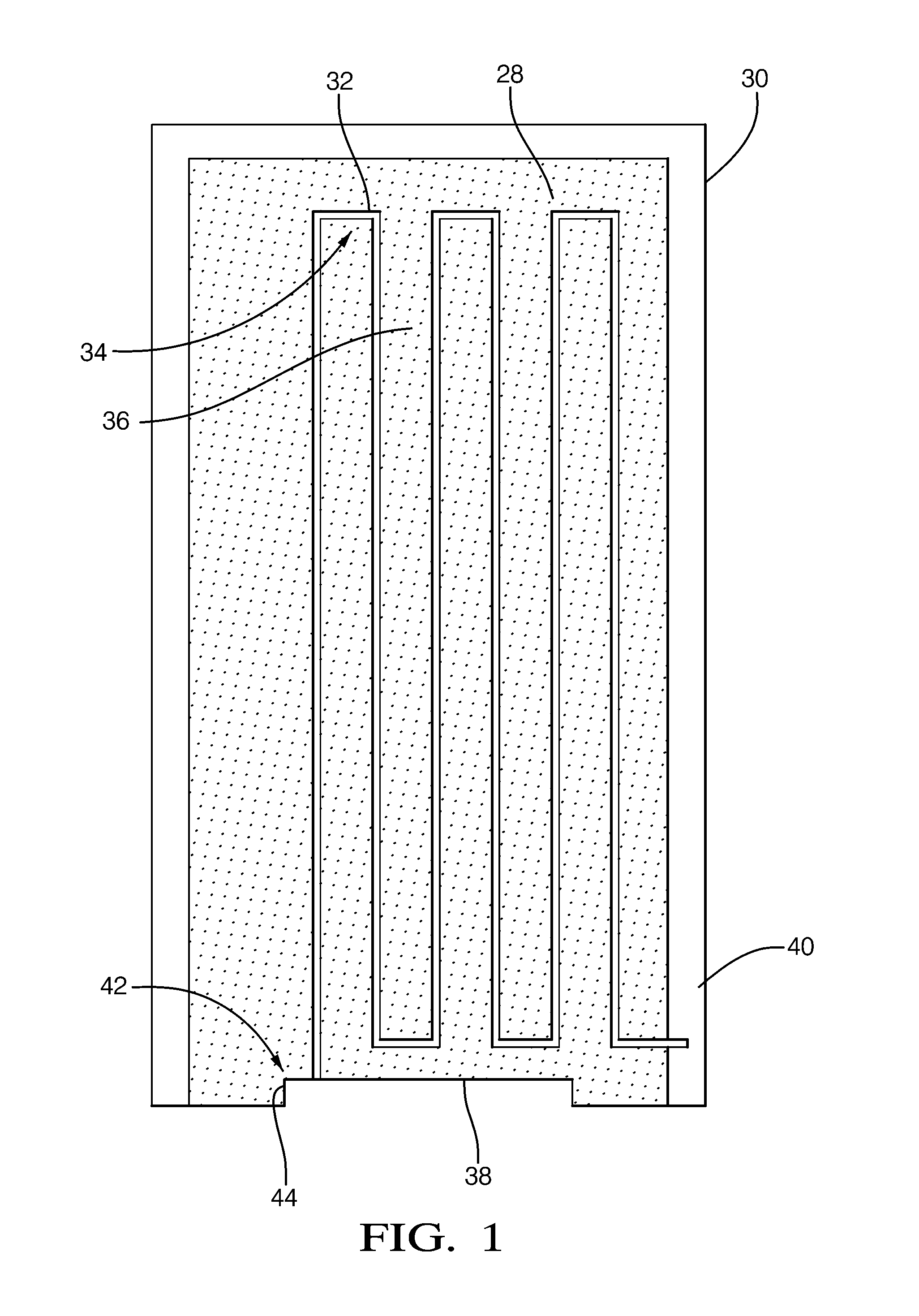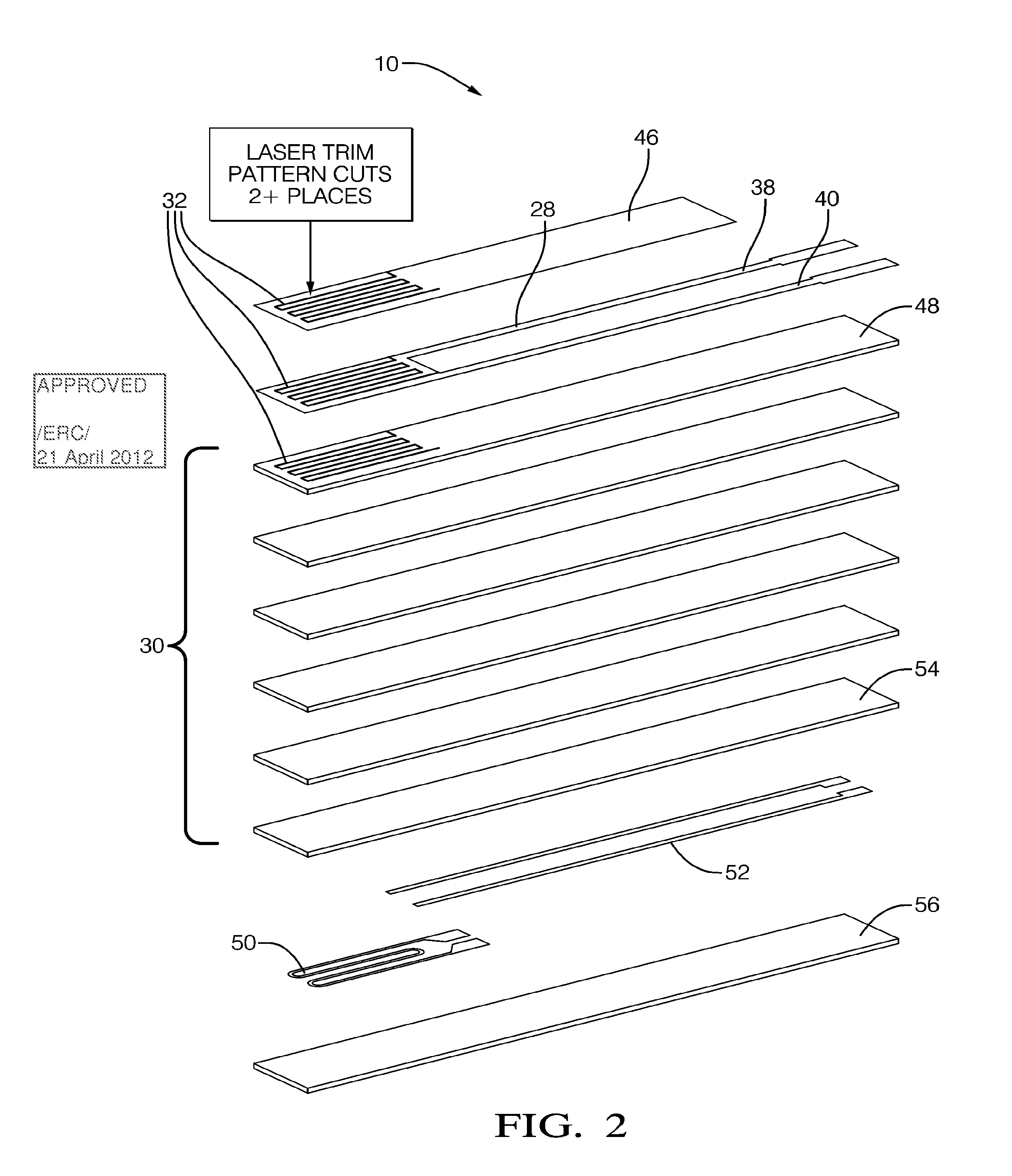Method and system for heater signature detection diagnostics of a particulate matter sensor
a technology of particulate matter and detection diagnostics, which is applied in the direction of electrical control, instruments, nuclear elements, etc., can solve the problems of difficult to distinguish, difficult to form parts, and air pollution
- Summary
- Abstract
- Description
- Claims
- Application Information
AI Technical Summary
Benefits of technology
Problems solved by technology
Method used
Image
Examples
Embodiment Construction
[0021]Referring now to the Figures, where the invention will be described with reference to specific embodiments, without limiting same.
[0022]In describing and claiming algorithms according to the invention, letters and naming conventions are arbitrarily employed to represent numerical values (e.g., ROBD—hot, KR—OBD—on—pct). These naming conventions are used solely to enhance the readability of the description of the invention, and are not intended to have any functional significance whatsoever. The representation of these numerical values is intended to be precisely the same as if, for example completely arbitrary descriptions (e.g., R1, R2, K1, K2) had been used. Additionally, it should be noted that in the practice of the invention, measurements of resistance between the electrodes may be made by applying a known current across the electrodes, measuring the voltage differential between the electrodes, and calculating the resistance using Ohm's law, as is well-known in the art. It...
PUM
| Property | Measurement | Unit |
|---|---|---|
| weight percent | aaaaa | aaaaa |
| width | aaaaa | aaaaa |
| thickness | aaaaa | aaaaa |
Abstract
Description
Claims
Application Information
 Login to View More
Login to View More - R&D
- Intellectual Property
- Life Sciences
- Materials
- Tech Scout
- Unparalleled Data Quality
- Higher Quality Content
- 60% Fewer Hallucinations
Browse by: Latest US Patents, China's latest patents, Technical Efficacy Thesaurus, Application Domain, Technology Topic, Popular Technical Reports.
© 2025 PatSnap. All rights reserved.Legal|Privacy policy|Modern Slavery Act Transparency Statement|Sitemap|About US| Contact US: help@patsnap.com



